Recent Articles
Popular Makes
Body Types
2020 Toyota Highlander Road Test and Review
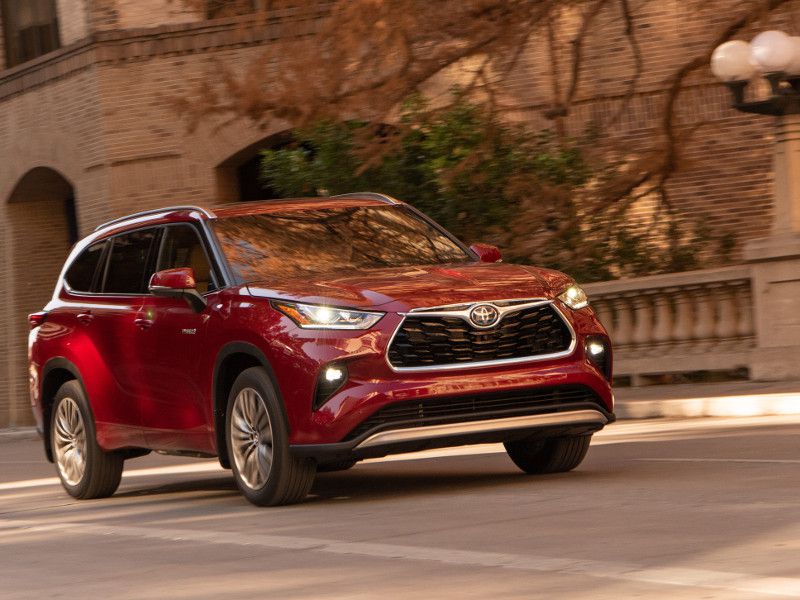
2020 Toyota Highlander Hybrid Platinum ・ Photo by Toyota
The Toyota Highlander has been a leading mid-size crossover SUV since 2001, offering family buyers an affordable, reliable, and enjoyable ownership experience. Since 2006, Toyota has offered the Highlander with a hybrid drivetrain, and that’s what really makes this model special. Over the years, more brands have joined Toyota in the mid-size hybrid SUV market, but at least for now, the Highlander remains the most affordable option.
Toyota has completely redesigned the Highlander for 2020. The important fundamentals are the same, but Toyota made necessary upgrades to keep the Highlander competitive into the next decade. Read on to find out what’s new and why the 2020 Toyota Highlander is still a top choice among today's mid-size SUVs.
What’s new on the 2020 Toyota Highlander?
Toyota started fresh with the 2020 Highlander, discarding the old chassis and moving to the Toyota New Global Architecture platform. The new structure gives the Highlander better ride and handling than previous generations, and helps improve crash safety.
Toyota has also made its advanced safety and driver assistance package standard on all Highlanders. The Toyota Safety Sense 2.0 package includes full-speed range adaptive Dynamic Radar Cruise Control, so the Highlander can follow the prevailing traffic speed right down to stop and go. The TSS package also includes a pre-collision automatic braking system with pedestrian detection, lane departure assistance, and automatic high beam control. Two new features are lane-tracing assistance and road sign recognition. Lane-tracing assistance works in conjunction with the adaptive cruise control, allowing the Highlander to recognize lane markers and help steer the vehicle around curves. Road sign recognition uses the Highlander’s cameras to recognize important notifications like speed limits, and places that information into the available head-up display.

Photo by Toyota
The Highlander Trim Walk
The 2020 Highlander is available in five distinct trim levels. The base L trim is well-equipped with the same gasoline engine and drivetrain options as all other trims, and an 8-inch touchscreen infotainment system. As we mentioned, the base trim now includes the full Toyota Safety Sense advanced safety system, too.
Above the L trim is LE, XLE, Limited, and Platinum. Luxury features are added on at each level, with the Platinum trim offering heated and ventilated leather seats, navigation, and many other desirable features. Base prices range from $34,600 to $48,800 for the gas-powered Highlander. The Highlander is also available with a hybrid driveline in the LE, XLE, Limited, and Platinum trims. Like the gas engines, the hybrid may be ordered with all-wheel drive in any available trim level. Prices range from $38,200 to $50,200 for hybrid trims.
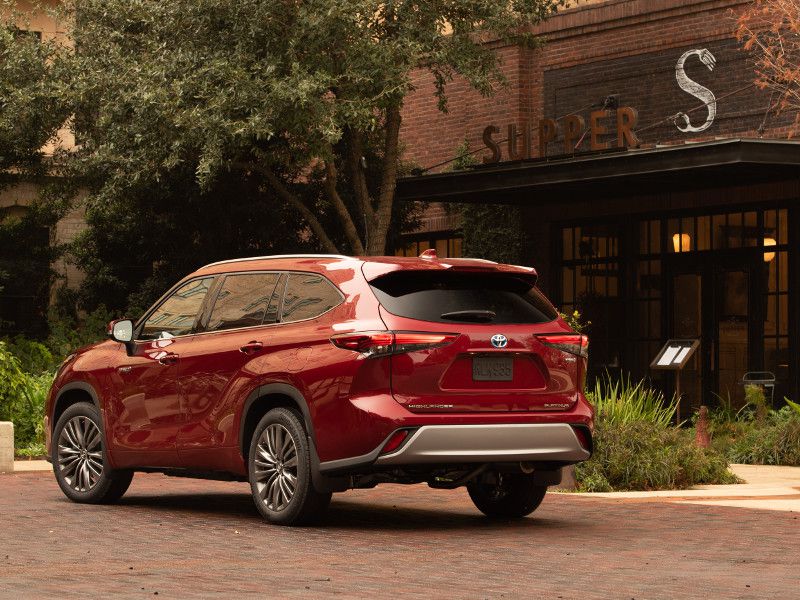
Photo by Toyota
V6 Engine and Drivetrain
The basic engine and driveline package for the new Highlander is a carryover 3.5-liter V6, paired with an eight-speed automatic transmission. The V6 engine produces 295 horsepower and 263 pound-feet of torque. That’s enough to give the new Highlander plenty of power on the road and towing capacity up to 5,000 pounds.
All 2020 Highlander trims can be purchased with front-wheel drive or all-wheel drive. Upgrading to all-wheel drive adds $1,600 to the purchase price at the lower L, LE, and XLE trim levels, and $1,950 at the top Limited and Platinum. The difference is that the lower trims use a basic AWD system that engages the rear axle as a unit, while the top two trim levels have a more advanced torque-vectoring AWD system that can send power to any wheel with traction. Toyota expects highway fuel economy to be rated up to 29 mpg with front-wheel drive, and 27 mpg for all-wheel drive models.
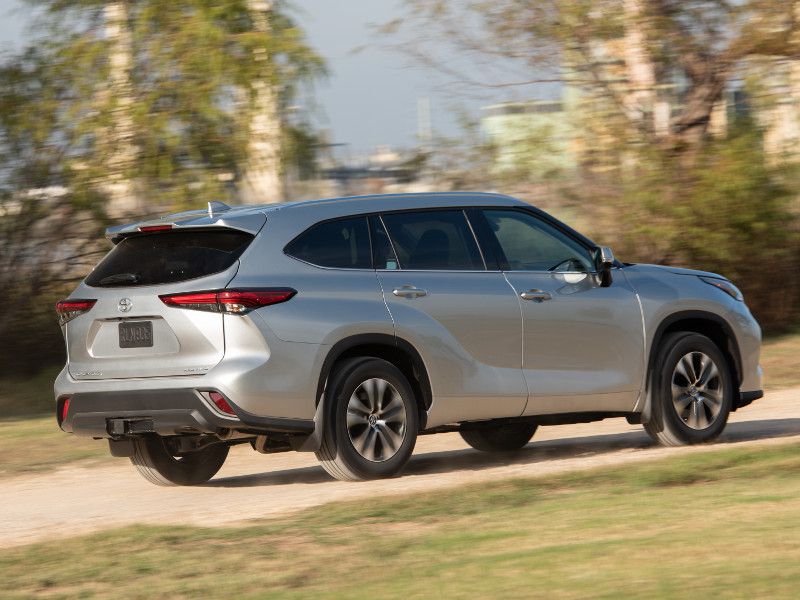
Photo by Toyota
Highlander Hybrid With Electronic AWD
Perhaps the most important thing about the 2020 Highlander is the fact that it’s available with a hybrid drivetrain. Toyota’s hybrid system employs a 2.5-liter four-cylinder engine, paired with two electric motors and a new continuously variable transmission to drive the front wheels. The combined system produces 243 horsepower and 175 pound-feet of torque. The Highlander Hybrid is rated to tow up to 3,500 pounds.
New for 2020, the hybrid is available with front-wheel drive as well as all-wheel drive, creating a more affordable option. If the Highlander Hybrid is configured with all-wheel drive, the rear wheels are simply driven by an additional electric motor. The system is quite efficient because there’s no mechanical connection from the gas engine to the rear wheels; it’s all done electronically. All that makes the new Highlander Hybrid the most fuel-efficient Highlander ever. The EPA has not issued its final estimates yet, but Toyota expects a combined city/highway fuel economy rating of 36 mpg. More good news: Toyota is backing the Highlander’s hybrid battery pack with a 10-year or 150,000-mile warranty. The rest of the hybrid system is covered for eight years or 100,000 miles, including the battery control module, hybrid control module, and inverter with converter.
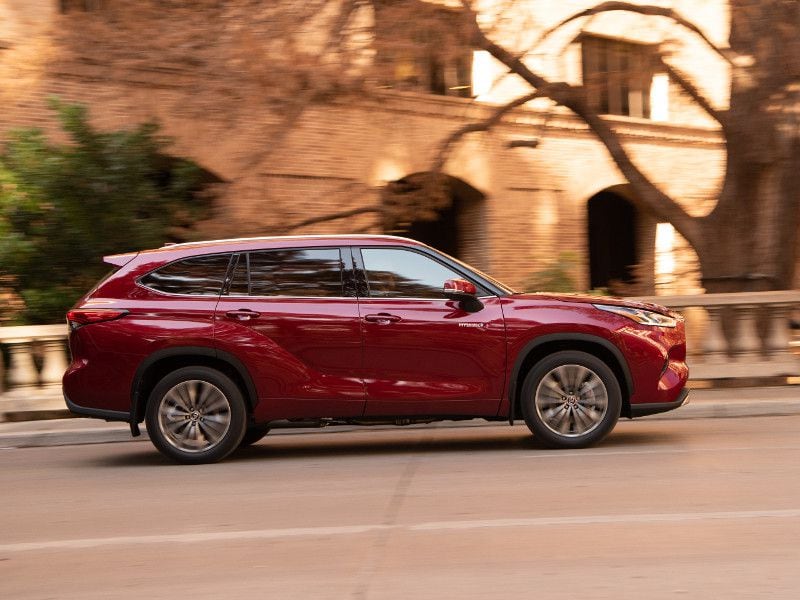
Photo by Toyota
Interior Space and Design
The redesigned Highlander also includes an all-new interior with some striking design elements. The dashboard incorporates a horizontal bar that envelopes the touchscreen and the climate controls. The temperature controls in the lower trims use convenient dials to adjust driver and passenger comfort separately, while the higher trims employ up-and-down buttons. We preferred the lower-trim climate interface, but the presence of seat heaters in the higher trims is a clear winner for winter driving.
Most SUVs grow over time, and the 2020 Highlander is 2.36 inches longer than the outgoing model. Most of that space has been used to make second- and third-row passengers more comfortable. The second-row seats slide forward and back, and Toyota added 1.2 inches to their travel to create more third-row legroom. Cargo capacity is generous, with 16 cubic feet of carrying space behind the third row. Folding the third row gets you 48.4 cubic feet behind the second row, which grows to 84.3 cubic feet with all rear seats folded.
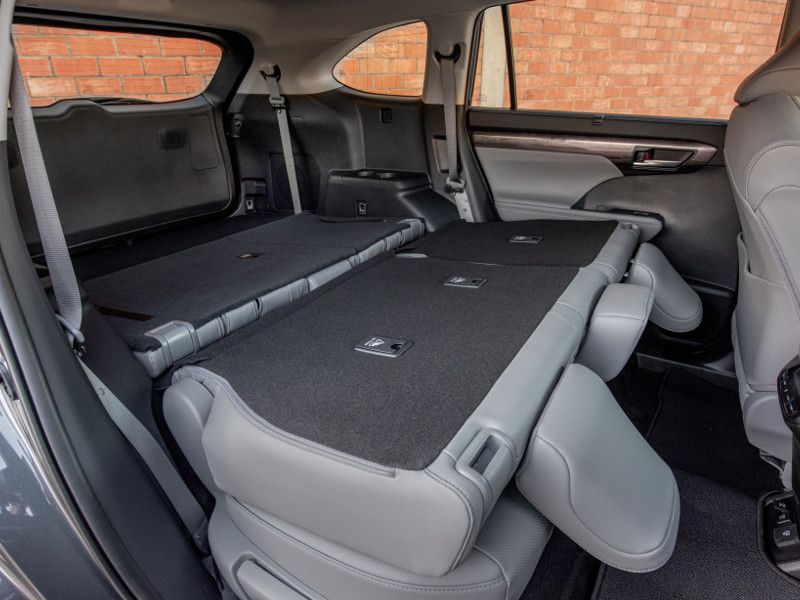
Photo by Toyota
Dashboard Technology
Toyota has updated the infotainment technology throughout the Highlander line. An 8-inch touchscreen infotainment interface is standard for most trims, and it offers access to Android Auto, Apple CarPlay, onboard Wi-Fi, Waze navigation, and Amazon Alexa. SiriusXM satellite radio capability is also included. There’s also an optional upgrade to a 12.3-inch system that includes Toyota’s onboard navigation. This system is optional on the Limited trim and standard on the Platinum. Onboard navigation can also be optioned on the 8-inch screen in the XLE trim.
Behind the steering wheel, Toyota provides a 4.2-inch or 7-inch digital information display. A head-up display is also included on the Platinum trim. This technology projects crucial driving information onto the windshield, including the prevailing speed limit, current speed, and navigation information. Top Highlanders also offer a JBL premium audio system. This 11-speaker, 1,200-watt stereo is standard for Limited and Platinum trims. As you would expect, it sounds great.
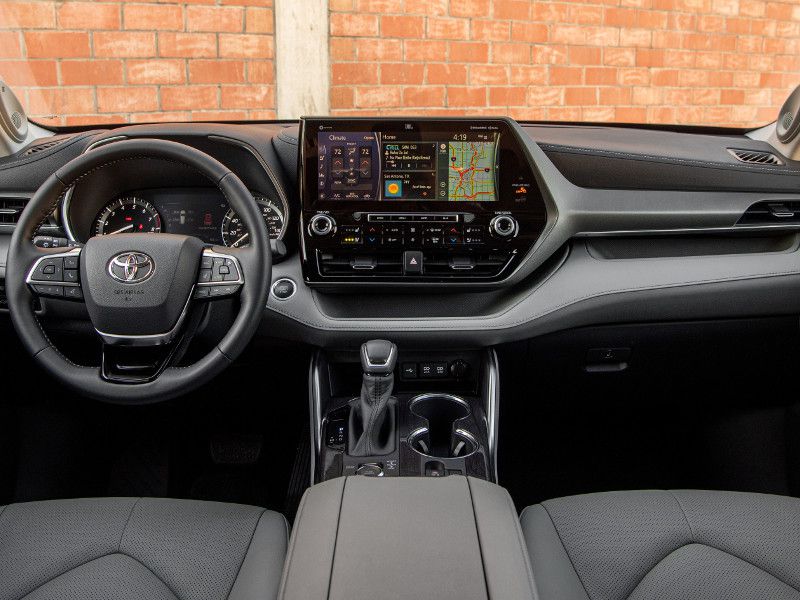
Photo by Toyota
Highlander on the Road
All these changes to the chassis, drivelines, and interior give the new Highlander an enjoyable on-road driving experience. The new chassis platform feels planted and secure on the road, with a smooth ride that covers bumps without bouncing, even in the back. Brakes are more than adequate, with confident stopping power. Visibility is similarly good, and the Highlander even offers a bird’s-eye camera view and camera-based rearview mirror in the Platinum trim level.
The V6 Highlander feels quite powerful in normal driving conditions, in both front-wheel and all-wheel drive configurations. The hybrid offers much less torque, and the continuously variable transmission keeps the four-cylinder gas engine in its powerband, so you’ll hear the engine a little more. The hybrid is by no means unsatisfactory, and the decrease in performance is a necessary tradeoff for the improved fuel economy.
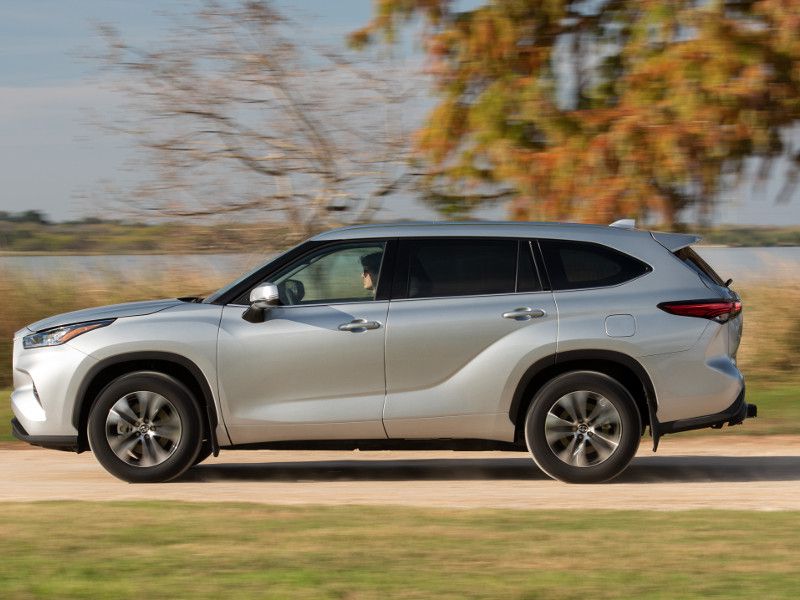
Photo by Toyota
Highlander in Your Driveway
Toyota restyled the new Highlander with an adventurous and bold look. Strong fenders and a new grille announce the Highlander’s presence. It’s more style than this SUV has ever had before, and it lives up to Toyota’s intention to produce more dramatic vehicles.
Key standard features include 18-inch alloy wheels on most trims, changing up to 20-inch wheels on the Limited and Platinum trims. Automatic LED headlights and taillights are included on all trims. Starting in the LE, you get LED fog lights, a power liftgate, and blind-spot monitoring. The XLE model adds a tilt-and-slide moonroof. The Limited and Platinum add better side window glass to enhance privacy and reduce road noise.
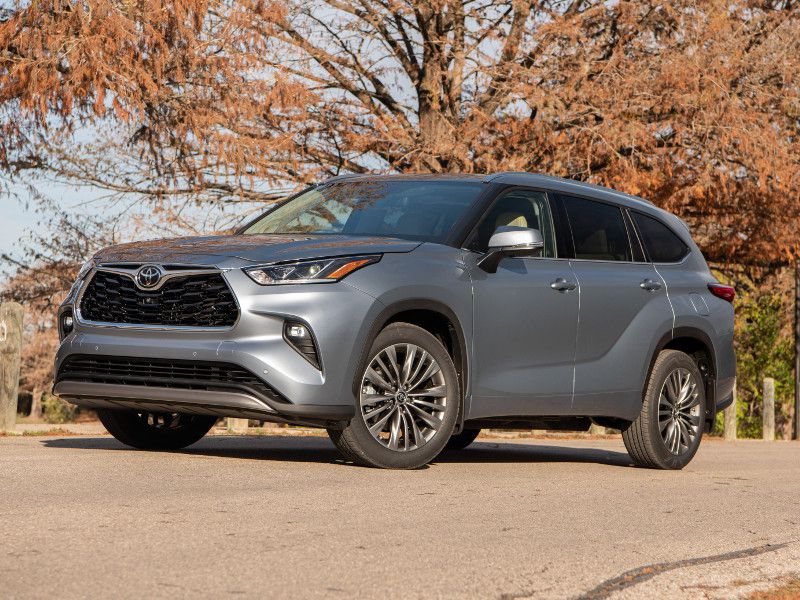
Photo by Toyota
Competitors to Consider
There are at least 24 different mid-size SUVs on the market this year. Many of those come with features and pricing competitive with the V6 Highlander, though the Highlander dramatically outsells all the competition. Strong alternatives to consider would include the 2020 Subaru Ascent, 2020 Honda Pilot, 2020 Hyundai Palisade, and 2020 Kia Telluride.
The number of SUVs that compete with the Highlander Hybrid is smaller. The competing SUVs are hybrid versions of the 2020 Acura MDX, 2020 Ford Explorer, 2020 Lexus RX450h, 2020 Lincoln Aviator, 2020 Mercedes GLE 450, and Volvo XC60 and Volvo XC90. Among all these hybrid options, the Highlander is the undisputed price leader at a base price of $38,200, plus a $1,120 destination charge. In fact, it's the only one of these options available under $45,000.
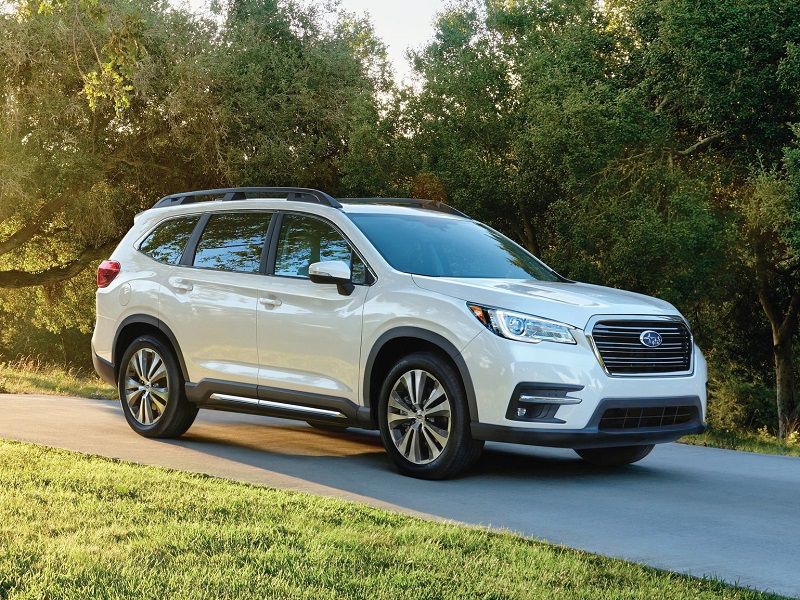
Photo by Subaru
The Bottom Line
There’s a good reason why the Highlander attracts more buyers than any other mid-size SUV. Toyota provides excellent value for budget-conscious families, and it has enhanced the entire Highlander package for 2020. Features that some automakers offer only on premium trims or at extra cost are now standard on the Highlander. Toyota’s range of trims allows you to choose the level of luxury you want to buy, while not penalizing you if you choose a basic trim.
Put it all together and you have an SUV that works very well at any price point. Every trim level offers more features than Highlander has ever offered before, and your family can be safe, comfortable, and happy with any Highlander you choose.
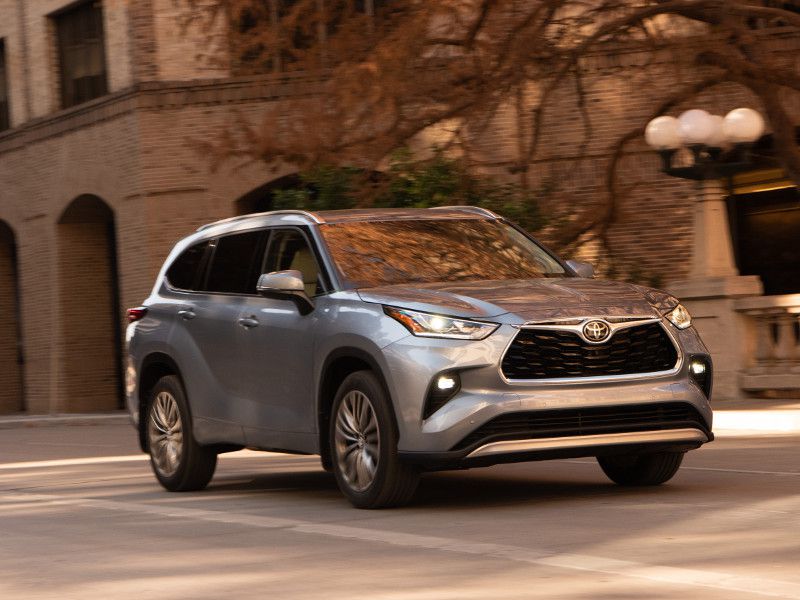
Photo by Toyota